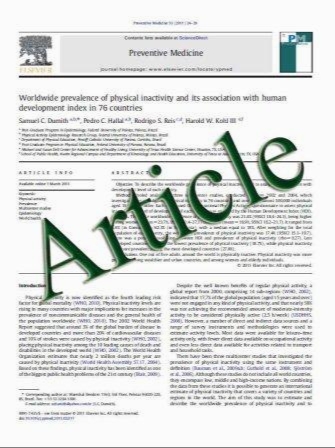Bone status in a mouse model of genetic hemochromatosis
- نوع فایل : کتاب
- زبان : انگلیسی
- مؤلف : P. Guggenbuhl & P. Fergelot & M. Doyard & H. Libouban & M.-P. Roth & Y. Gallois & G. Chalès & O. Loréal & D. Chappard
- چاپ و سال / کشور: 2010
Description
Summary Genetic hemochromatosis is a cause of osteoporosis; mechanisms leading to iron-related bone loss are not fully characterized. We assessed the bone phenotype of HFE-/- male mice, a mouse model of hemochromatosis. They had a phenotype of osteoporosis with low bone mass and alteration of the bone microarchitecture. Introduction Genetic hemochromatosis is a cause of osteoporosis. However, the mechanisms leading to iron-related bone loss are not fully characterized. Recent human data have not supported the hypothesis of hypogonadism involvement. The direct role of iron on bone metabolism has been suggested. Methods Our aim was to assess the bone phenotype of HFE-/- male mice, a mouse model of human hemochromatosis, by using microcomputed tomography and histomorphometry. HFE-/- animals were sacrificed at 6 and 12 months and compared to controls. Results There was a significant increase in hepatic iron concentration and bone iron content in HFE-/- mice. No detectable Perls’ staining was found in the controls’ trabeculae. Trabecular bone volume (BV/TV) was significantly lower in HFE-/- mice at 6 and 12 months compared to the corresponding wild-type mice: 9.88±0.82% vs 12.82± 0.61% (p=0.009) and 7.18±0.68% vs 10.4±0.86% (p= 0.015), respectively. In addition, there was an impairment of the bone microarchitecture in HFE-/- mice. Finally, we found a significant increase in the osteoclast number in HFE-/- mice: 382.5±36.75 vs 273.4±20.95 ¢/mm2 (p= 0.004) at 6 months and 363.6±22.35 vs 230.8±18.7 ¢/mm2 (p=0.001) at 12 months in HFE-/- mice vs controls. Conclusion Our data show that HFE-/- male mice develop a phenotype of osteoporosis with low bone mass and alteration of the microarchitecture. They suggest that there is a relationship between bone iron overload and the increase of the osteoclast number in these mice. These findings are in accordance with clinical observations in humans exhibiting genetic hemochromatosis and support a role of excess iron in relation to genetic hemochromatosis in the development of osteoporosis in humans.
Osteoporos Int (2011) 22:2313–2319 DOI 10.1007/s00198-010-1456-2 Received: 16 June 2010 / Accepted: 29 September 2010 / Published online: 26 October 2010


